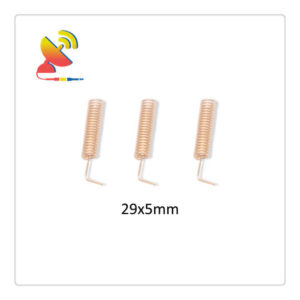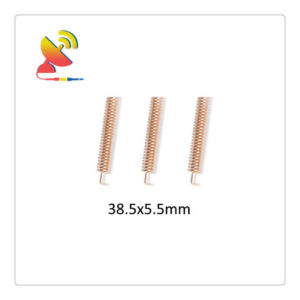Description
What is an Extra-wide Band UWB Antenna Embedded PCB Antenna?
The CTRF-ANTENNA-PCB-2801050-5050-SMA Extra-wide Band UWB Antenna Embedded PCB Antenna is an embedded antenna with a 2.8 GHz to 10.5 GHz wideband PCB board antenna SMA female connector antenna manufactured by C&T RF Antennas Inc.
Extra-wide Band UWB Antenna Embedded PCB Antenna Is Available At C&T RF Antennas Inc. The leading PCB antenna UWB antenna ultra wide-band antenna manufacturer in China.
C&T RF Antennas Inc provides internal & external antennas with antenna radio frequencies such as NFC, 169MHz, 230MHz, 315MHz, 433MHz, 868MHz, 915MHz, VHF&UHF, Lora, NB-IoT, ADS-B, GSM, GNSS, GPRS, 1.2 GHz, 1.4 GHz, 1.8 GHz, Wi-Fi 2.4 GHz, 5.8 GHz, Cellular 2G, 3G, 3.5 GHz, 4G LTE, GPS, 5G NR, 6G, etc.
C&T RF Antennas Inc. provides RF antennae with Omni & Directional antenna types such as Dipole Antennas, Whip Antennas, Marine Antennas, Router Antennas, MIMO Antennas, Combo Antennas, PCB Antennas, FPC Antennas, Spring Antennas, Magnetic Antennas, Sector Antennas, Yagi Antennas, and Accessories, etc, for IoT & M2M industries.
Contact Us For More Info on Extra-wide Band UWB Antenna such as the Extra-wide Band UWB Antenna datasheet, Extra-wide Band UWB Antenna pricing, Extra-wide Band UWB Antenna inventory, etc.
UWB Antenna Embedded PCB Antenna Specifications
UWB Antenna Embedded PCB Antenna Electrical Specifications |
|
| RF Antenna Type | PCB Antenna |
| Model | CTRF-ANTENNA-PCB-2801050-5050-SMA |
| Frequency | 2.8GHz-10.5Hz |
| Gain | 6dBi/8dBi |
| VSWR | ≤3.0 |
| Impedance | 50 Ω |
| Polarization | Vertical/Linear |
| Connector | SMA Female |
| Lightning Protection | DC-Ground |
UWB Antenna Embedded PCB Antenna Mechanical Specifications |
|
| PCB Board Dimension | 50*50mm |
| Weight | Approx. 10g |
| Material | PCB Board |
| Operation Temperature | -40˚C ~ +75˚C |
| Storage Temperature | -40˚C ~ +80˚C |
| Color | Green |
| Antenna Design | Dipole Antenna |
| Mounting | Screw |
| Safety Emission and other | RoHS Compliant |
UWB Antenna Design
Ultra-wideband (UWB) technology is the preferred technology for short-distance broadband wireless communication in the future. The antenna is one of the key components of the UWB system. The performance of the antenna directly affects the communication quality.
The design of UWB antennas is very different from the design of traditional narrowband antennas. All the indicators must be considered in the ultra-wideband of 3.1~10.6GHz.
It is not only necessary to consider conventional indicators such as standing wave ratio, gain, and pattern, but also characteristics such as transfer function, and the antenna must be suitable for integration with other components of the system.
Through the comprehensive application of theoretical analysis, software simulation, and practical testing, the designed antenna achieves the expected best effect.
The simulation and experimental results show that the designed antenna can work in the 3.1~10.6GHz UWB frequency band; the pattern is stable; the system transfer function is flat in amplitude and linear in phase.
From different angles, the antennas are equivalent to sensors, impedance converters, radiators, and transducers. Then the UWB antennas are classified, and finally, the relationship between UWB antennas and system design is discussed.
UWB extra-wide band antenna
For time-domain short-pulse radiation technology, biconical antennas and their evolved V-cone antennas and sector dipole antennas were used in the early days at home and abroad.
Because these types of antennas have disadvantages such as difficulty in feeding, low radiation efficiency, strong transmission, and reception coupling, and inability to measure time-domain target characteristics, they can only be used for single transmission and reception.
With the development of microwave integrated circuits, and the use of integrated circuits for feeding, the developed ultra-wideband planar slot antenna can generate symmetrical beams and use balanced ultra-wideband feeding, so it has ultra-wideband characteristics.
Also, because the antenna made by photolithography technology has no restriction on higher frequencies, the millimeter, and sub-millimeter wavebands can be applied to integrated receivers.






Reviews
There are no reviews yet.